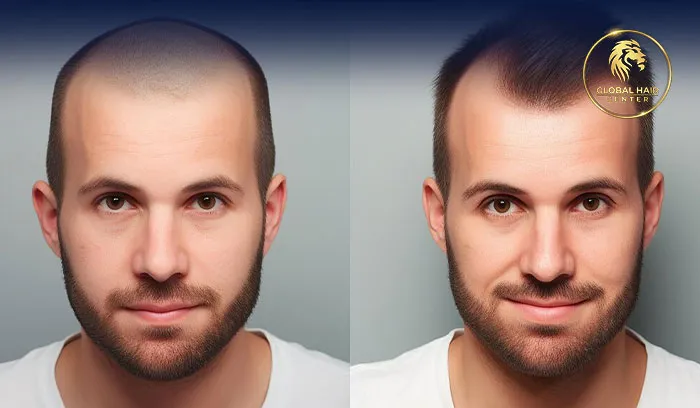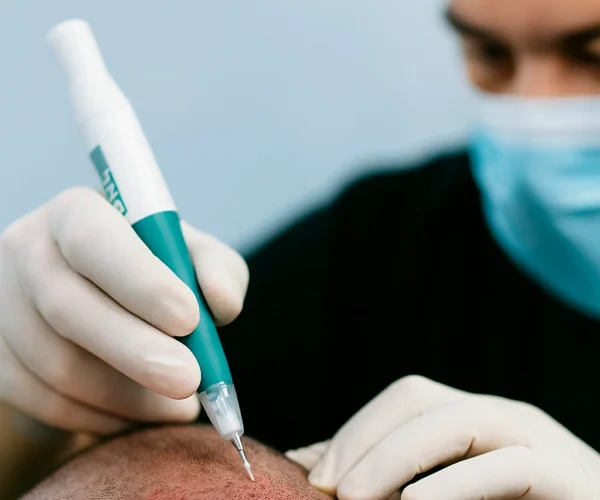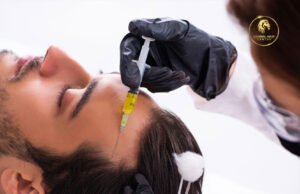How To Manage Hair Transplant Procedures
- October 29, 2024
- By Admin
- 332
- Hair Transplant In Dubai

How To Manage Hair Transplant Procedures
Hair transplant procedures have become increasingly popular in recent years as a reliable solution for hair loss. It’s the answer to hair loss whether it’s caused by genetics, aging, or medical conditions.
A person’s entire look and sense of confidence can be affected by hair loss. Hair transplants involve the transfer of healthy follicles from one region of the body to parts that are balding or experiencing thinning, providing a natural method of hair restoration.
There are many hair transplant techniques, their mechanisms, and what to anticipate throughout the surgery will all be covered in this article. Knowing how it works is an excellent starting step if you’re thinking of getting this therapy or are just curious.
Hair Transplant Procedures
It’s essential to understand the basics of the two main types of hair transplant procedures: Follicular Unit Transplantation (FUT) and Follicular Unit Extraction (FUE). We’ll explain each of them individually.
Follicular Unit Transplantation (FUT)
The FUT procedure includes removing a strip of the scalp from the donor area and then extracting individual hair follicles from this strip and transplanting them to the thinning or balding areas. The donor area is then sutured closed which usually leaves a thin linear scar.
Follicular Unit Extraction (FUE)
FUE involves extracting individual hair follicles directly from the donor area, then the follicles are checked and adjusted under the microscope. After that, they are transplanted in the recipient area. This method does not require the removal of a strip of scalp, making it less invasive than FUT. This technique is used for many procedures such as beard hair transplants and head hair transplants.
The Role of the Doctor’s Expertise
The expertise and experience of the doctor play a crucial role in the overall experience of a hair transplant. Skilled doctors help administer anesthesia with minimal discomfort and perform the procedure efficiently to reduce the duration of the surgery, which can also help minimize discomfort.
Pain Tolerance and Individual Differences
Pain tolerance varies significantly among individuals. Some patients may have a high pain threshold and experience minimal discomfort, while others may be more sensitive. Understanding your own pain tolerance can help set realistic expectations for the procedure. Additionally, communicating openly with your surgeon about your pain concerns can lead to a more personalized pain management plan.
Innovations in Hair Transplant Techniques
Advancements in hair transplant technology have made procedures less invasive and more comfortable. For example, robotic hair transplant systems, like the ARTAS system, use advanced algorithms to identify and extract the best hair follicles, which can lead to a more precise and less painful experience. These innovations continue to improve patient comfort and outcomes.
Potential Complications and Their Management
While hair transplants are generally safe, some potential complications could cause pain or discomfort. These include infections, swelling, and in rare cases, nerve damage. It’s important to follow all the doctor’s instructions to minimize these risks. Immediate reporting of any unusual pain or symptoms to your doctor ensures efficient management.
Long-Term Benefits vs. Short-Term Discomfort
Focusing on the long-term benefits of a hair transplant can help patients manage short-term discomfort. The psychological and emotional benefits of having fuller and thicker hair often outweigh the temporary discomfort experienced during the procedure and recovery.
Increased confidence, improved self-esteem, and the end of daily hair loss concerns make the process worthwhile for many patients.
Alternative Pain Management Options
Some patients explore alternative pain management options to reduce discomfort during and after the procedure. Techniques such as meditation and deep breathing exercises can help reduce anxiety and pain perception.
Additionally, some clinics offer complementary therapies such as acupuncture or light therapy to enhance patient comfort.
Impact of Procedure Setting
The setting in which the procedure is performed can also impact the patient’s comfort level. Clinics that prioritize patient comfort with amenities such as comfortable seating, calming music, and a relaxing environment can help reduce anxiety and make the overall experience more pleasant.
Choosing a clinic that offers a supportive and soothing atmosphere can make a significant difference in your pain experience.
The Psychological Aspect of Pain Management
Understanding the psychological component of pain can help patients prepare mentally for the procedure. Anxiety and stress can heighten the perception of pain, so techniques that promote relaxation and mental well-being can be highly beneficial. Cognitive-behavioral strategies, such as positive visualization and affirmations, can help patients maintain a positive outlook and manage pain more effectively.
Support Systems
Having a strong support system can also play a significant role in the recovery process. Friends and family who understand the procedure and are supportive can provide emotional and practical assistance during the recovery period. This support can help alleviate anxiety and improve the overall recovery experience.
Post-Procedure Care and Lifestyle Adjustments
Following post-procedure instructions is essential for minimizing discomfort and ensuring a smooth recovery. Patients may need to make temporary lifestyle adjustments, such as avoiding heavy activities, protecting the scalp from direct sunlight, and refraining from smoking or alcohol consumption, which can slow the healing process. Proper nutrition and hydration also support faster recovery and reduce discomfort.
Long-Term Maintenance
Even after the initial recovery, patients need to follow long-term maintenance guidelines to ensure the longevity of the transplant results. This includes using recommended hair care products, following a healthy diet, and possibly undergoing periodic follow-up treatments to maintain hair health. Understanding these long-term commitments can help patients prepare mentally and physically for the journey ahead.

Conclusion
Managing hair transplant procedures requires careful preparation and attention to the instructions required before and after the operation. You can improve your hair transplant’s success by following your doctor’s recommendations, maintaining a healthy lifestyle, and being aware of the healing process.
The majority of patients have natural, long-lasting results with appropriate care, but patience is essential since the results can take time to completely manifest which is up to 12 months after the operation.
Communicating your needs and concerns with your doctor and choosing a reliable clinic, will ensure that you get the best experience and amazing results.
In the end, gaining knowledge and collaborating closely with your healthcare team will guarantee a successful and seamless hair transplant experience that produces the intended outcomes.
Related Blogs

- October 6, 2025
DHI Hair Transplant in Dubai –.
Introduction: DHI Hair Transplant in Dubai The DHI (Direct Hair Implantation) technique represents the next generation of hair restoration. It.
Read More
- October 5, 2024
Unlocking the Secrets to Effective Hair.
Unlocking the Secrets to Effective Hair Restoration: Insights from Global Hair Dubai Hair loss affects millions worldwide, impacting self-esteem and.
Read More
